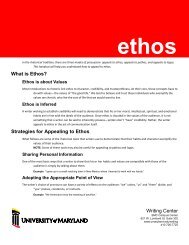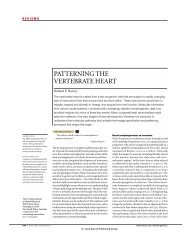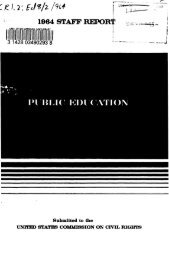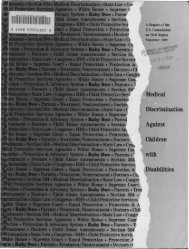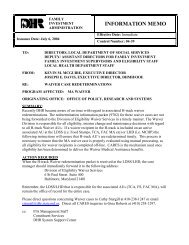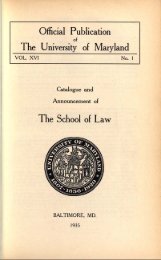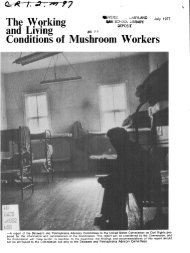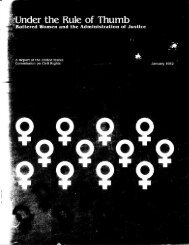Field Manual for 2013-2014 - University of Maryland School of ...
Field Manual for 2013-2014 - University of Maryland School of ...
Field Manual for 2013-2014 - University of Maryland School of ...
Create successful ePaper yourself
Turn your PDF publications into a flip-book with our unique Google optimized e-Paper software.
1. Discern the difference between one’s own feelings <strong>of</strong> urgency and those <strong>of</strong> the client.<br />
2. Assesses an emergency situation, recognizing its meaning in relation to the client’s lifestyle and<br />
culture.<br />
3. Distinguishes varying degrees <strong>of</strong> urgency and acts accordingly in regard to:<br />
a. Life-threatening situations requiring immediate action;<br />
b. Threats to psychosocial functioning requiring prompt attention:<br />
c. Situations that are stressful but not urgent.<br />
E. Ability to recognize the impact <strong>of</strong> specific variables upon practice.<br />
1. Demonstrates an advanced level <strong>of</strong> understanding the ways in which diversity impacts the context <strong>of</strong><br />
practice, the worker-client relationship, the practitioner’s response to the client, and the client’s<br />
ability to utilize services.<br />
2. Demonstrates an advanced level <strong>of</strong> understanding the ways in which social and economic injustice<br />
and oppression have an impact upon practice both in terms <strong>of</strong> the services <strong>of</strong>fered and the varying<br />
perceptions <strong>of</strong> and responses to client problems.<br />
3. Demonstrates an advanced level <strong>of</strong> understanding <strong>of</strong> the needs <strong>of</strong> particular populations at risk.<br />
F. Ability to act within the agency system in response to client need and advocate <strong>for</strong> change when needed.<br />
1. Works with the agency to facilitate its response to client need.<br />
2. Identifies, based on data from one’s practice, gaps and incongruities in service.<br />
3. Advocate <strong>for</strong> change when needed<br />
G. Ability to facilitate referrals and to connect clients to resources outside the agency.<br />
1. Prepares written referral summaries that are clear and concise.<br />
2. Locates and contacts appropriate resources.<br />
3. Gives the client a clear picture <strong>of</strong> what is involved in applying <strong>for</strong> and receiving services elsewhere.<br />
4. Assesses and acts upon factors that help or hinder effective referral (within the relationship, within<br />
the agency, and between agency systems).<br />
H. Ability to <strong>for</strong>mulate a culturally-sensitive assessment <strong>of</strong> client behavior.<br />
1. Identifies the theoretical perspective used to understand client behavior.<br />
2. Connects specific concepts to observations <strong>of</strong> behavior.<br />
3. Produces written diagnostic <strong>for</strong>mulations that connect observations and theory.<br />
4. Identifies additional theoretical perspectives that can add to an understanding <strong>of</strong> the client’s<br />
behavior.<br />
5. Uses a strengths perspective in the assessment <strong>of</strong> client behavior.<br />
I. Ability to link the assessment to the plan <strong>for</strong> intervention.<br />
1 . Uses the diagnostic <strong>for</strong>mulation as the basis <strong>for</strong> planning the specific approach to helping.<br />
2. Makes a logical connection between the assessment <strong>of</strong> behavior and the plan <strong>for</strong> intervention.<br />
3. Uses a strengths perspective in planning and implementing interventions.<br />
J. Ability to establish a helping contract.<br />
1. Makes clear to clients how the worker proposes to help.<br />
2. Enlists the client’s participation in deciding if and how help is to be transacted.<br />
3. Examines ones participation in beginning the helping process--or in resisting it.<br />
K. Ability to reaffirm or to renegotiate contracts based on on-going assessment.<br />
1. Provides feedback to clients and elicits feedback from clients as to the experience in the helping<br />
process.<br />
63



